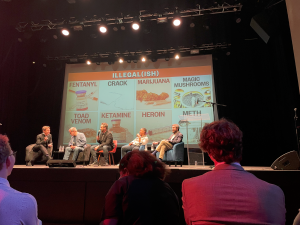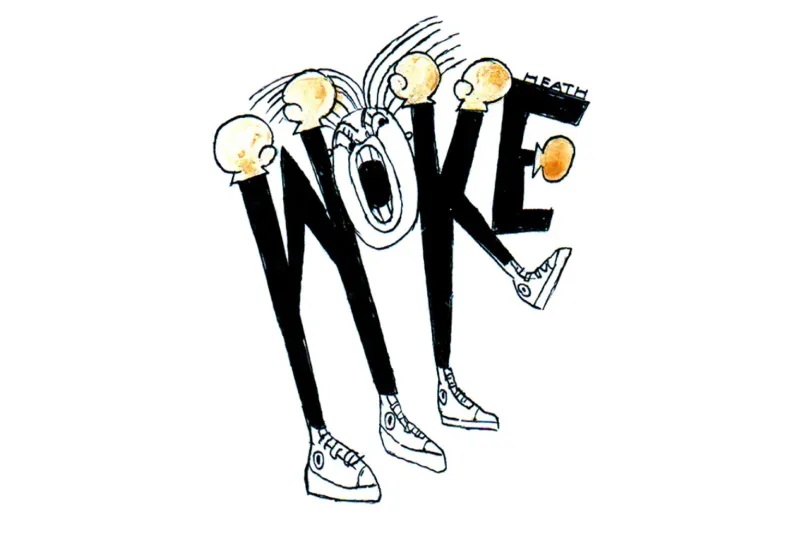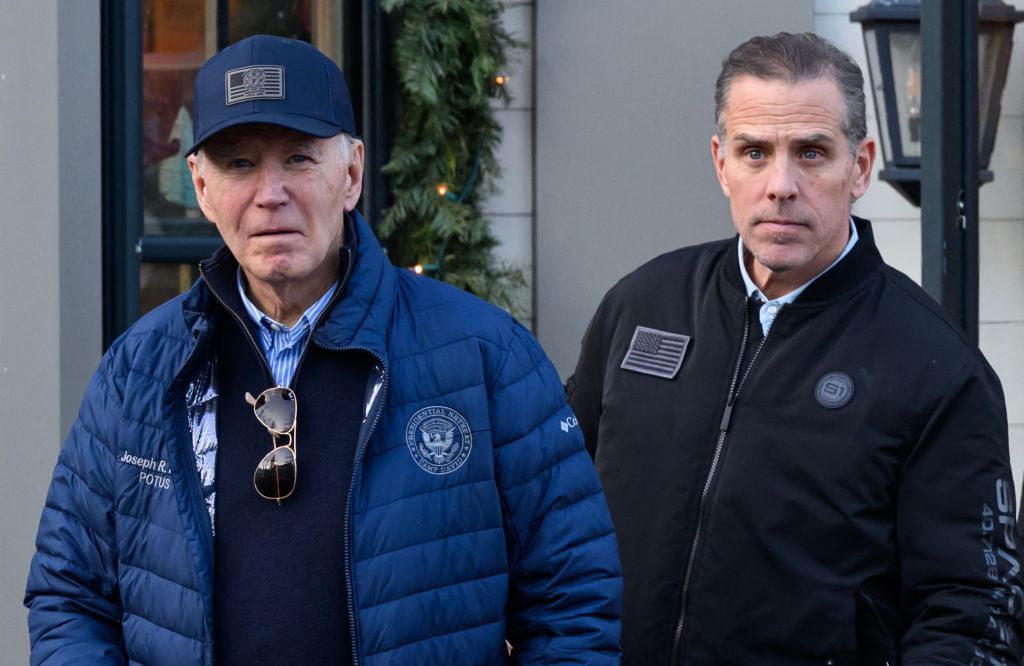“Imagine taking a pill that makes you instantly feel relaxed, and then imagine that when you stop taking it, you feel worse than when you first started.”
That’s how one user describes benzodiazepines, a psychoactive drug prescribed to treat insomnia, anxiety and seizures. But while “benzos” can have some short-term benefits, habitual use can cause long-term damage.
Another user writes that his benzodiazepine addiction was “harder to overcome than heroin.”
A young professional I interviewed said she’d never had addiction issues before trying benzodiazepines, which were prescribed by her doctor. “I was always averse to feeling addicted to any substance,” she explained, “yet this drug, I was told, was relatively harmless, and it provided such immediate gratification it was hard to stop once I had started.”
While the opioid epidemic is widely reported on, the consequences of benzo use remain largely unknown. This is because of the relative novelty of the drugs, the stigmas surrounding mental health and addiction, and the fact that the harms of benzo abuse are not always immediately obvious. For instance, although benzos can lead to physical dependence and mental health issues, they usually do not cause fatal overdoses unless combined with other drugs such as opiates or alcohol.
Benzos are, however, increasingly common. One study found that in 2016, 30.6 million people, or 12.6 percent of the adult population in the US, admitted to using benzodiazepines in the previous year. As recently as 1996, only 4.1 percent of adults were filling prescriptions (though this number does not account for illegal use, which accounted for 20 percent of the total from 2015 to 2016).
In line with rising use rates, overdose deaths involving benzodiazepines more than tripled between 1996 to 2010. Approximately 85 percent of the 2017 overdose deaths involving benzodiazepines also involved an opioid, but these two medications are often prescribed together. In 2015, opioids were prescribed at 26.4 percent of visits at which there was a benzodiazepine prescription.
The way benzodiazepines work on the brain is relatively simple: they enhance the binding of the neurotransmitter GABA, which blocks signals in the central nervous system, to its receptor. The result is a “slowing down” of the brain that produces a calming effect. Over the long term, however, benzodiazepine use leads to “gradual disruption of neuronal inhibitory GABAergic synapses,” according to a 2018 paper in Nature, which looked at brain tissue in vitro. In other words, it atrophies your neurons’ natural chemical processes and ability to produce GABA on its own. Hence, withdrawal symptoms begin to develop.
Perhaps the most recent high-profile victim of benzos is the celebrity clinical psychologist Jordan Peterson. In February 2020, Peterson’s daughter, Mikhaila, revealed that her father had attempted an emergency detox at a Russian hospital to break his benzodiazepine addiction, which he had developed after a doctor had prescribed him the drug to help manage stress. When Peterson re-emerged in public after a harrowing rehab ordeal, he described his addiction as “absolute hell” and reported having suicidal thoughts while on the medication. Other celebrities who died from overdoses that included benzos are Heath Ledger and Michael Jackson, yet little was reported about how these medications contributed to their downfall.
Two other former users I spoke with described suicidal ideation as a side-effect of the drugs. “I never had suicidal thoughts before, and suddenly, after I started taking benzodiazepines, those thoughts slowly started to creep in,” said one. “After the effect of the drug first subsided, my mood would completely drop. I never understood how it was related to the medication. I thought I was the problem, so I started therapy that I realized was ineffective precisely because my brain was being altered by an outside substance.”
Another former user said, “I had never had feelings of suicide before. When I was prescribed benzos, I started having increased panic attacks that were seemingly unexplainable, and not wanting to live anymore became a recurring thought.”
While correlation is not causation, suicidal thoughts and benzodiazepine use have a causal link. A literature review by Pub Med concluded that “benzodiazepines appear to cause an overall increase in the risk of attempting or completing suicide.” Other withdrawal symptoms include sleep disturbance, irritability, increased tension and anxiety, panic attacks, paranoia, agitation, impulsivity, difficulty concentrating and muscular pain.
One former user said he took benzodiazepines for a decade after being traumatized on 9/11. When he finally quit the medication, he said, “I had muscle pain to the point where I had to lie down, I definitely had cognitive slights, where I was trying to add ninety and thirty, and taking longer time than is normal.” It can take months, if not years, for a brain to reach its natural equilibrium again after detoxing from benzos, according to American Addiction Centers.
How have such addictive and potentially dangerous drugs become so common? Benzos date back to the postwar period, when researchers were attempting to develop a safer and less addictive alternative to opiates and barbiturates. The first benzo, Librium, was approved by the Food and Drug Administration in 1960, followed three years later by Valium, the “little yellow pill” immortalized by the Rolling Stones. More recent benzodiazepines include Xanax, Lorazepam and Klonopin. Benzos became so widely prescribed because, as opposed to mood stabilizers and SSRIs that take weeks to become effective, benzos provide instant relief.
Yet the dangers of benzos have been known for decades. In the 1980s, the benzodiazepine manufacturers Roche Products Ltd and John Wyeth and Brothers Ltd were subject to the largest class-action lawsuit against drug companies in British history. The plaintiffs argued that the companies had been aware of the potential of benzodiazepines to cause physical dependence but withheld that information, thereby creating “the biggest medically induced health problem of the 20th Century.”
That lawsuit collapsed in the mid-1990s, but it prompted pharmaceutical companies in Britain and the US to issue warnings about the drugs and/or require patients to sign informed consent forms. But warning labels are trivial when a doctor, in a position of expertise and authority, prescribes a medication to patients desperate to find a solution to their depression or anxiety. Michel Foucault, in The Birth of the Clinic, explores how the “medical gaze” induces patients to submit to the authority, and subsequent knowledge, of a doctor.
Some doctors have taken a hard stand against the drugs. Allen J. Frances, an American psychiatrist who served as chair of the DSM-IV task force, has warned that benzodiazepines have few legitimate clinical uses and “should never be used as they are most typically used” — regularly, over a long period of time, in increasing doses. A benzodiazepine “does relieve [a patient’s] anxiety at the moment,” he explains, “but hours later the anxiety reoccurs, sometimes even stronger.” This builds tolerance and, ultimately, dependence, even among patients who take the medication as prescribed.
Benzodiazepines are often defended for their ability to provide quick relief for acute anxiety, depression and insomnia, but even this has its costs. Benzos, according to the American psychiatrist Peter R. Breggin, dull the senses. As he writes in his book Toxic Psychiatry, “The drugged individual with a suppressed and confused anxiety signal system lives under a considerable handicap. At the least, feelings are pushed down, and with that, self-awareness is muted. More seriously, as the brain reacts against the drug, natural anxiety responses are muted but abnormal rebound anxiety reactions begin to flare up.” Doctors who prescribe medication as a solution to anxiety “reinforce the patient’s feelings of helplessness.” As an alternative to the drugs, Breggin strongly encourages relaxation techniques that can be developed with psychotherapy or self-help.
Pharmaceutical companies and doctors have continued to prescribe benzos with impunity, thanks to legal loopholes. The underlying assumption that the medical industry has its patients’ best interest at heart is misguided. The profit motive of pharmaceutical companies and doctors is paramount — even if it leads to an addiction epidemic.

























